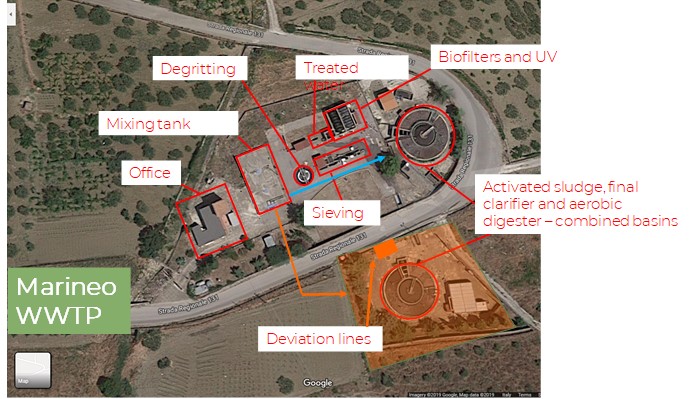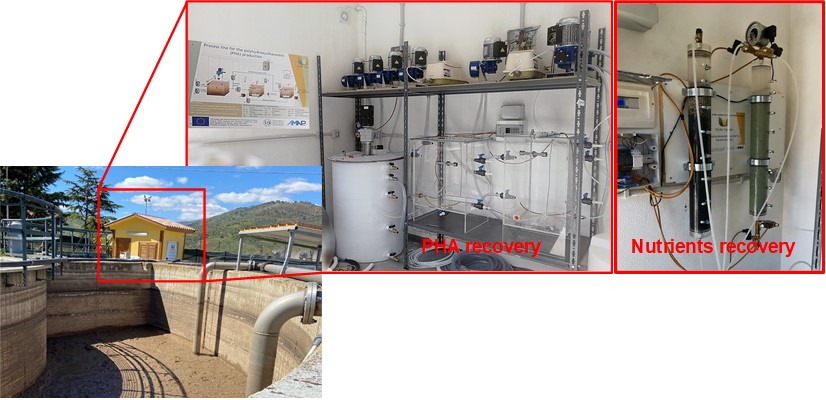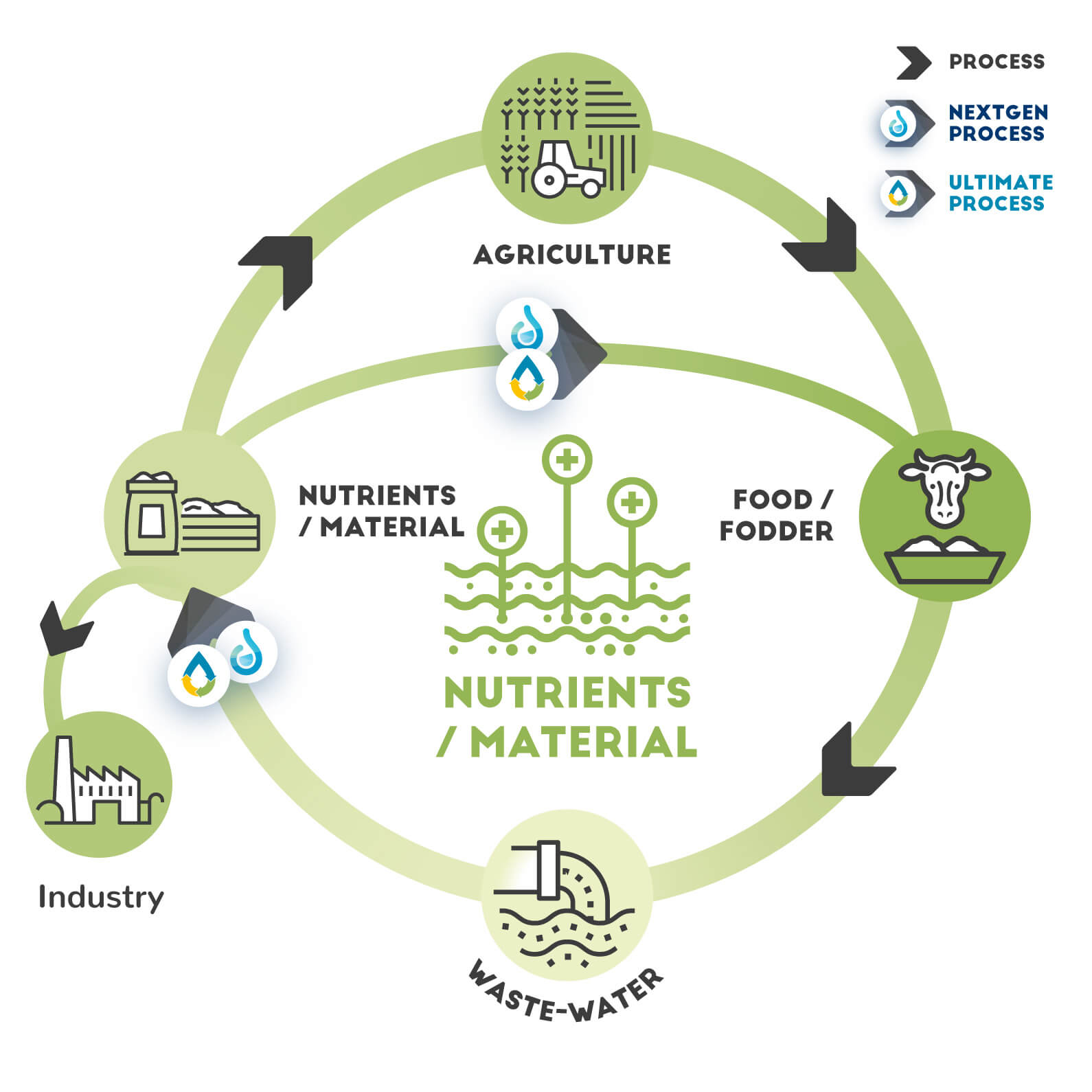Description
The Marineo case study consists of: i. wastewater treatment plant (WWTP); ii. deviation line for nutrients recovery from treated wastewater and polyhydroxyalcanoates (PHA) production from wastewater and sewage sludge. The Marineo WWTP was designed for 7,000 inhabitant equivalents. The Marineo WWTP has a typical conventional activated sludge (CAS) process with a pretreatment stage (sieving and degritting) followed by two parallel lines conceived as combined basins (biological treatment, settling and disinfection) followed by a surface filtration unit and UV disinfection. An irrigation network has been scheduled but not yet realized so at present the WWTP effluent is discharged in a nearby river. The Marineo WWTP was devoted to material recovery, by implementing a process line for the PHA production/extraction as well as the installation of final filters filled with Biochar and zeolites for nutrients adsorption and subsequent use as slow release fertilizer.
A shed for the deviation line at Marineo WWTP was constructed and put under operation. The deviation line for PHA production and extraction, is comprised by a fermenter unit for volatile fatty acid (VFA) production, a sequencing batch reactor for the growth of PHA accumulating organism (namely, SBR1) and a sequencing batch reactor for accumulation of PHA (namely, SBR 2). The deviation line for nutrients (nitrogen and phosphorus) recovering from the effluent flow is constituted by two adsorption columns filled with adsorbent material (biochar and zeolites) with the aim to recover ammonium and phosphate from the effluent streams. The filter columns have been installed next to the outlet section of Marineo WWTP. The design of the filter columns was carried out by using empty bed contact time (EBCT) and flow velocity based on data from the literature.
Applied technology
Requirements and conditions
No particular requirements or constraint have been encountered in the development of the demonstration activities. Concerning PHA recovery experimental operations were carried out without significant issues and all the activities including fermentation, biomass selection and PHA accumulation were accomplished according to the original target. Concerning nutrients recovery, the main issue was related to the content of suspended solids in the effluent from Marineo WWTP; mainly related to accidental drawbacks of final settler. In this case, columns were subject to sudden clogging phenomena which determined a non-uniform distribution of the feeding flow rate with the formation of preferential pathways, thus reducing the potential of nutrient sorption on the adsorbent material.
Applied product

The WIDER UPTAKE roadmap guide
The WIDER UPTAKE roadmap guide, developed by the H2020 WIDER UPTAKE project, offers a comprehensive framework for imple…



